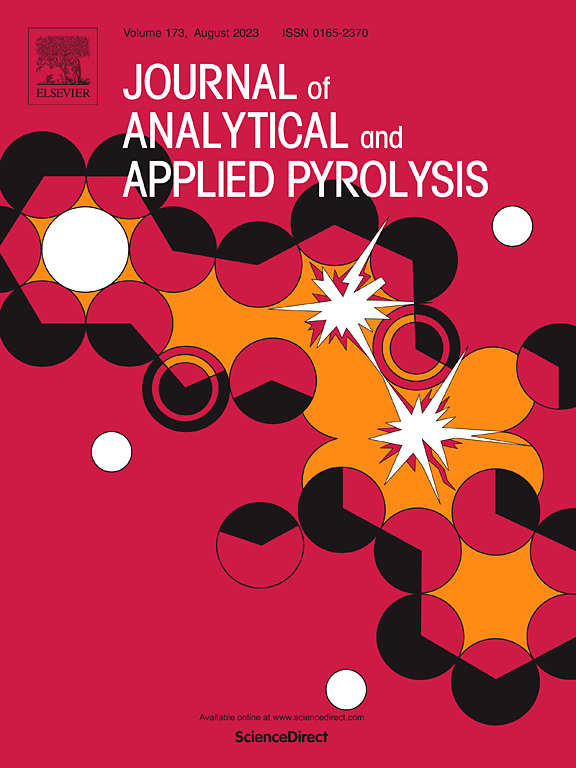聚酰亚胺气凝胶的热解行为、动力学和机理
IF 5.8
2区 化学
Q1 CHEMISTRY, ANALYTICAL
引用次数: 0
摘要
聚酰亚胺气凝胶具有密度低、热稳定性好、柔韧性高、力学性能优异等特点,在许多领域具有广泛的应用前景。然而,聚酰亚胺气凝胶在实际应用中的热安全性一直被忽视,其热解行为和反应动力学有待进一步研究。采用溶胶-凝胶法制备了10 ~ 60个重复单元的PIAs,研究了重复单元对聚酰亚胺气凝胶基本性能、微观结构和热稳定性的影响。重复单元为40的PIAs具有最低的密度、导热系数、径向收缩率、最高的孔隙率和最大的比面积等特点。利用TG-FTIR-MS对PIA的热解过程和产物进行了分析。采用无模型法计算热解动力学参数,采用CR法和Malek法选择预测反应模型。在不同升温速率下,计算得到的动力学参数与实验数据吻合较好,可以指导聚酰亚胺气凝胶的热解行为和热安全性。本文章由计算机程序翻译,如有差异,请以英文原文为准。
Pyrolysis behavior, kinetics, and mechanism of polyimide aerogels
Polyimide aerogels (PIAs) have extensive application prospects in numerous fields for their appealing characteristics, including low density, superior thermal stability, high flexibility, and remarkable mechanical properties. However, the thermal safety of polyimide aerogels in practical applications has been neglected, the pyrolysis behaviors and reaction kinetics need to be clarified. In this work, PIAs with different repeat units from 10 to 60 were prepared using the sol-gel method, and the effect of repeat unit on the basic properties, microstructure, and thermal stability of polyimide aerogel was studied. The PIAs with a repeat unit of 40 have the lowest density, thermal conductivity, radial shrinkage, the highest porosity, the largest specific areas, and so on. Furthermore, the pyrolysis process and products of PIA were analyzed by TG-FTIR-MS. The pyrolysis kinetic parameters were calculated by model-free method and the predicted reaction model was chosen by CR and Malek method. The calculated kinetic parameters are in good agreement with the experimental data at different heating rates, which can guide the pyrolysis behavior and thermal safety of polyimide aerogels.
求助全文
通过发布文献求助,成功后即可免费获取论文全文。
去求助
来源期刊
CiteScore
9.10
自引率
11.70%
发文量
340
审稿时长
44 days
期刊介绍:
The Journal of Analytical and Applied Pyrolysis (JAAP) is devoted to the publication of papers dealing with innovative applications of pyrolysis processes, the characterization of products related to pyrolysis reactions, and investigations of reaction mechanism. To be considered by JAAP, a manuscript should present significant progress in these topics. The novelty must be satisfactorily argued in the cover letter. A manuscript with a cover letter to the editor not addressing the novelty is likely to be rejected without review.

 求助内容:
求助内容: 应助结果提醒方式:
应助结果提醒方式:


